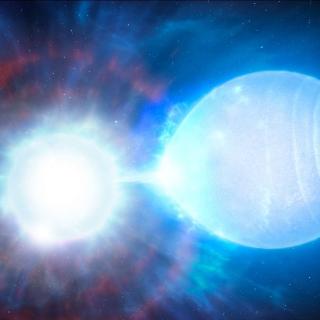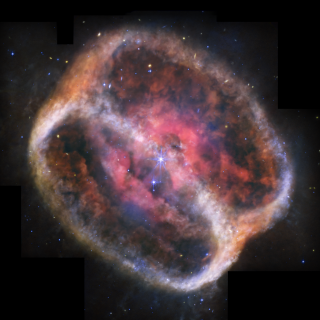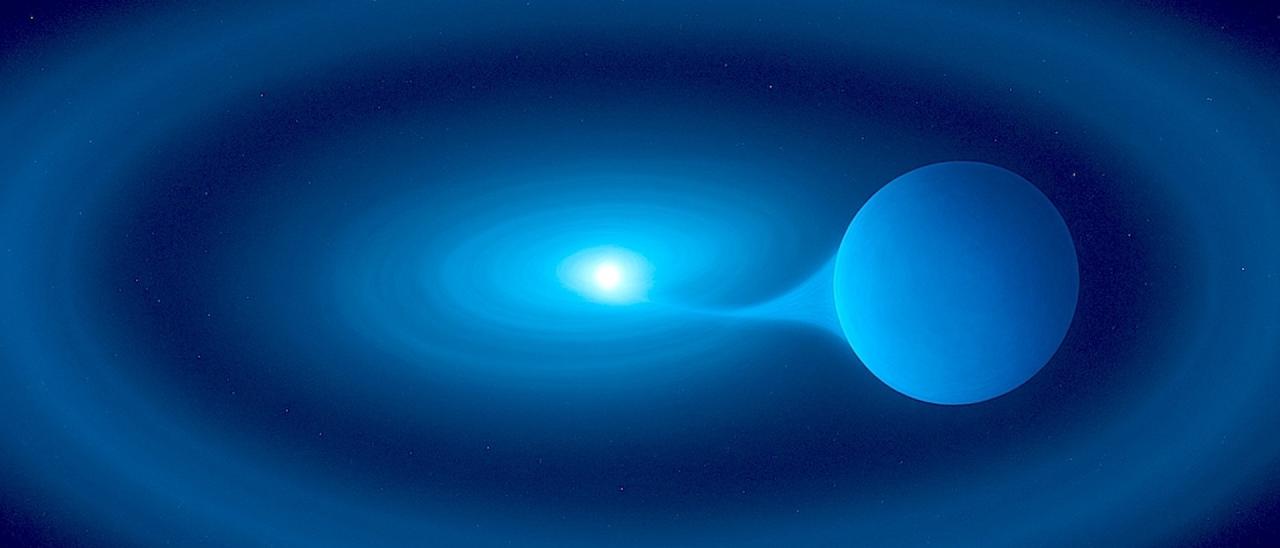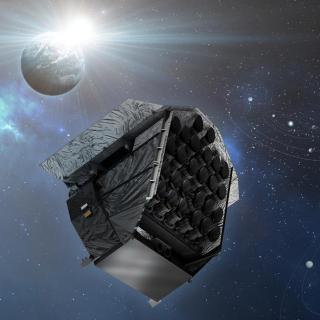A greedy white dwarf star in our own Milky Way galaxy is devouring its closest celestial companion at a rate never seen before, according to an international study involving the Instituto de Astrofisica de Canarias (IAC) and the University of La Laguna (ULL). The research, published in the journal Monthly Notices of the Royal Astronomical Society, found the double star, named V Sagittae, is burning unusually bright as the super-dense white dwarf is gorging on its larger twin in a feeding frenzy.
Experts think the stars are locked in an "extraterrestrial tango" as they orbit each other every 12.3 hours, gradually pulling each other closer. They say it could cause a massive explosion so bright it will be seen by the naked eye from Earth some 10,000 lightyears away.
Phil Charles, a researcher at the University of Southampton and co-author of the study, points out that these results crack a mystery about the star pair which has perplexed astronomers for a century: "V Sagittae is no ordinary star system—it's the brightest of its kind and has baffled experts since it was first discovered in 1902. Our study shows that this extreme brightness is down to the white dwarf sucking the life out of its companion star, using the accreted matter to turn it into a blazing inferno. It’s a process so intense that it's going thermonuclear on the white dwarf’s surface, shining like a beacon in the night sky”.
Researchers captured the cosmic carnage using the powerful European Southern Observatory’s Very Large Telescope in Chile—and made another discovery. They found a ring of gas, like a giant halo, is encircling both stars, a consequence of the huge amounts of energy being generated by the hungry white dwarf.
"This unexpected ring, formed from the debris of the messy feast, gives us a clue that could change what we know about how stars live and die," said lead author Pasi Hakala from the University of Turku. “The white dwarf cannot consume all the mass being transferred from its hot star twin, so it creates this bright cosmic ring. The speed at which this doomed stellar system is lurching wildly, likely due to the extreme brightness, is a frantic sign of its imminent, violent end," he added.
“The matter accumulating on the white dwarf is likely to produce a nova outburst in the coming years, during which V Sagittae would become visible with the naked eye," explains Pablo Rodríguez-Gil, a researcher at the IAC and the ULL who also participated in the study. “But when the two stars finally smash into each other and explode, this would be a supernova explosion so bright it’ll be visible from Earth even in the daytime”, he concludes.
Article: Pasi Hakala, Phil Charles, Pablo Rodríguez-Gil: "V Sge: Supersoft Source or Exotic Hot Binary? I. An X-Shooter campaign in the high state", MNRAS, 2025. DOI: https://doi.org/10.1093/mnras/staf1284
Contact at the IAC:
Pablo Rodríguez-Gil, prguez [at] iac.es (prguez[at]iac[dot]es)






